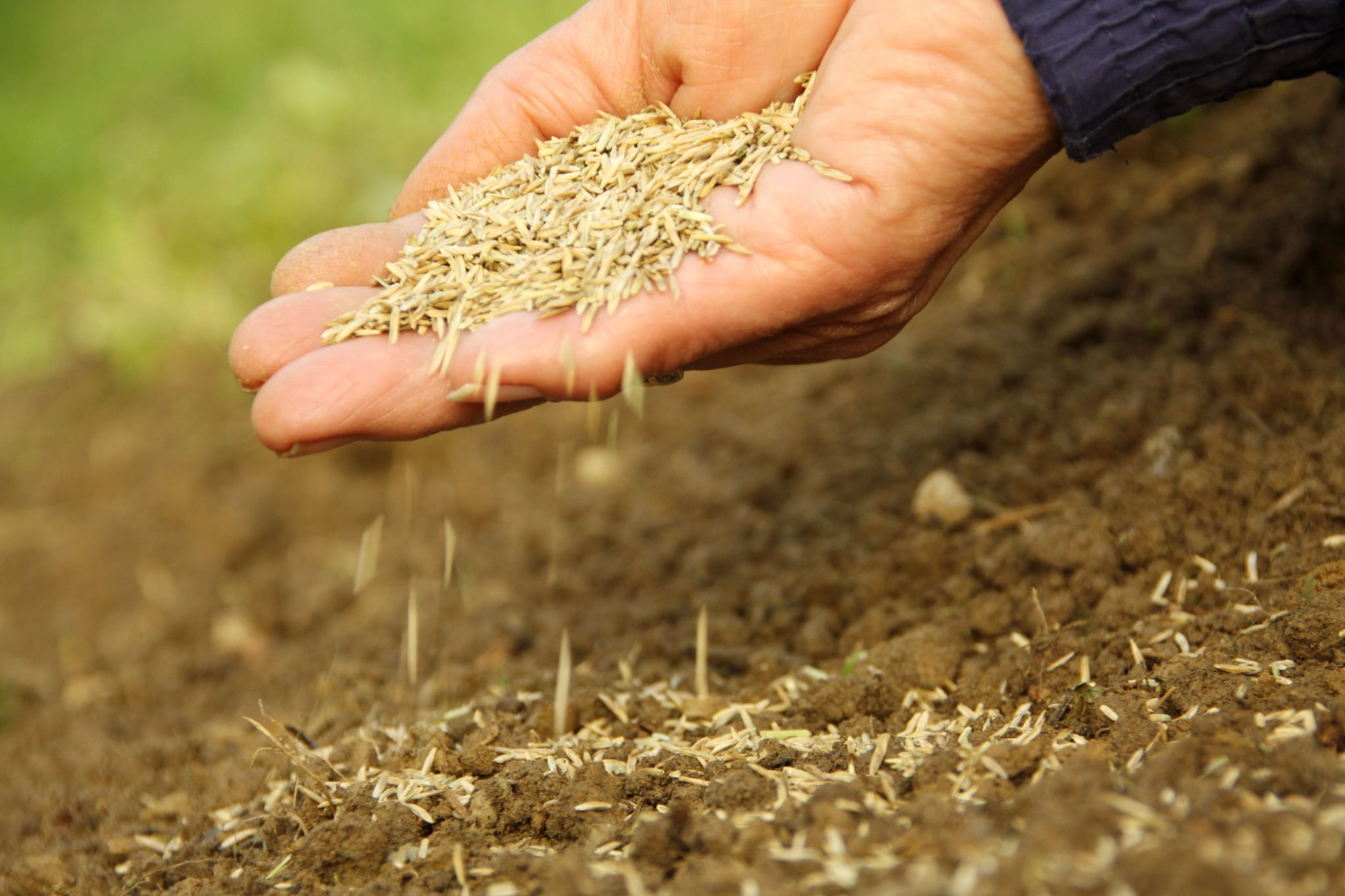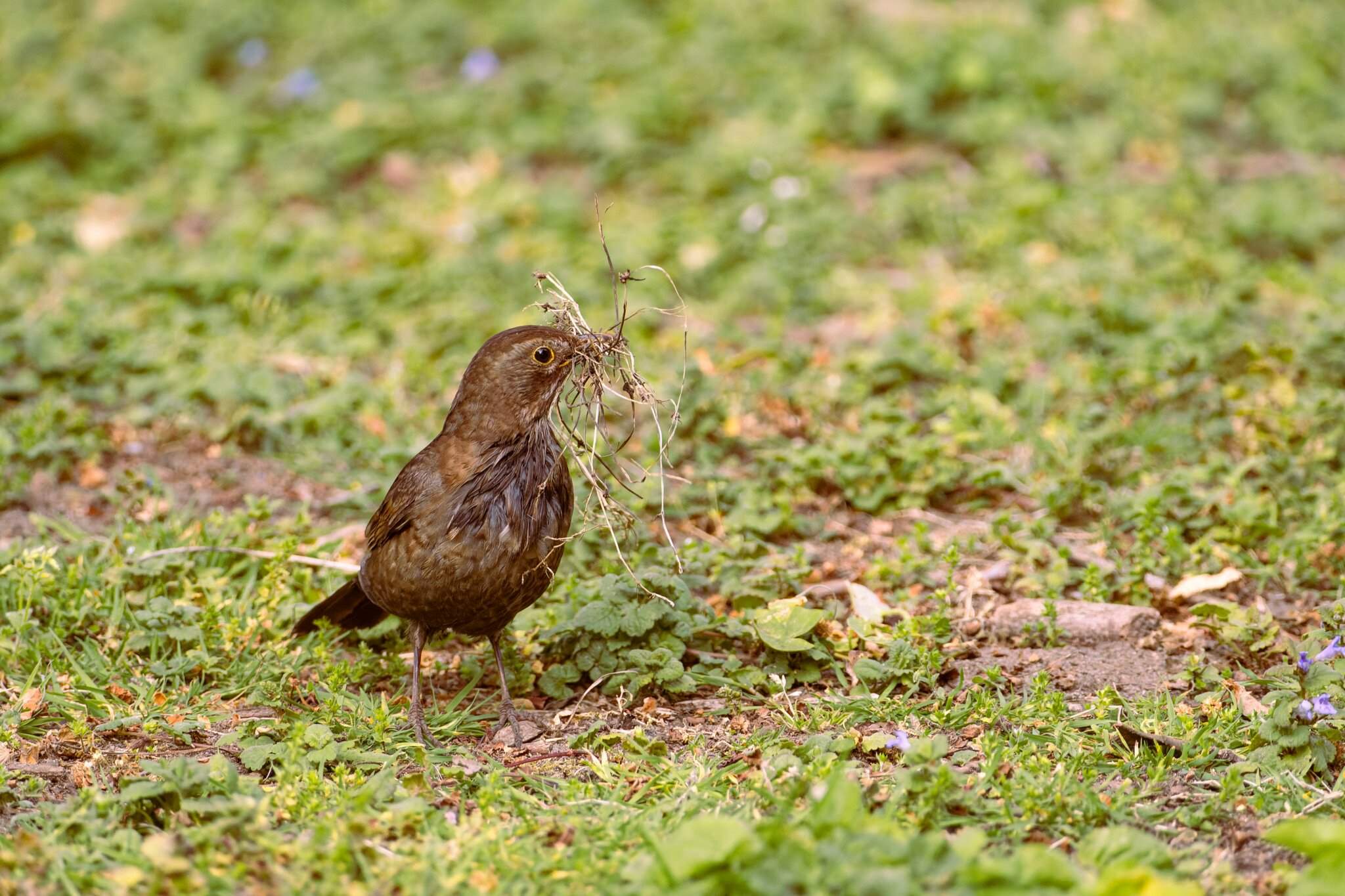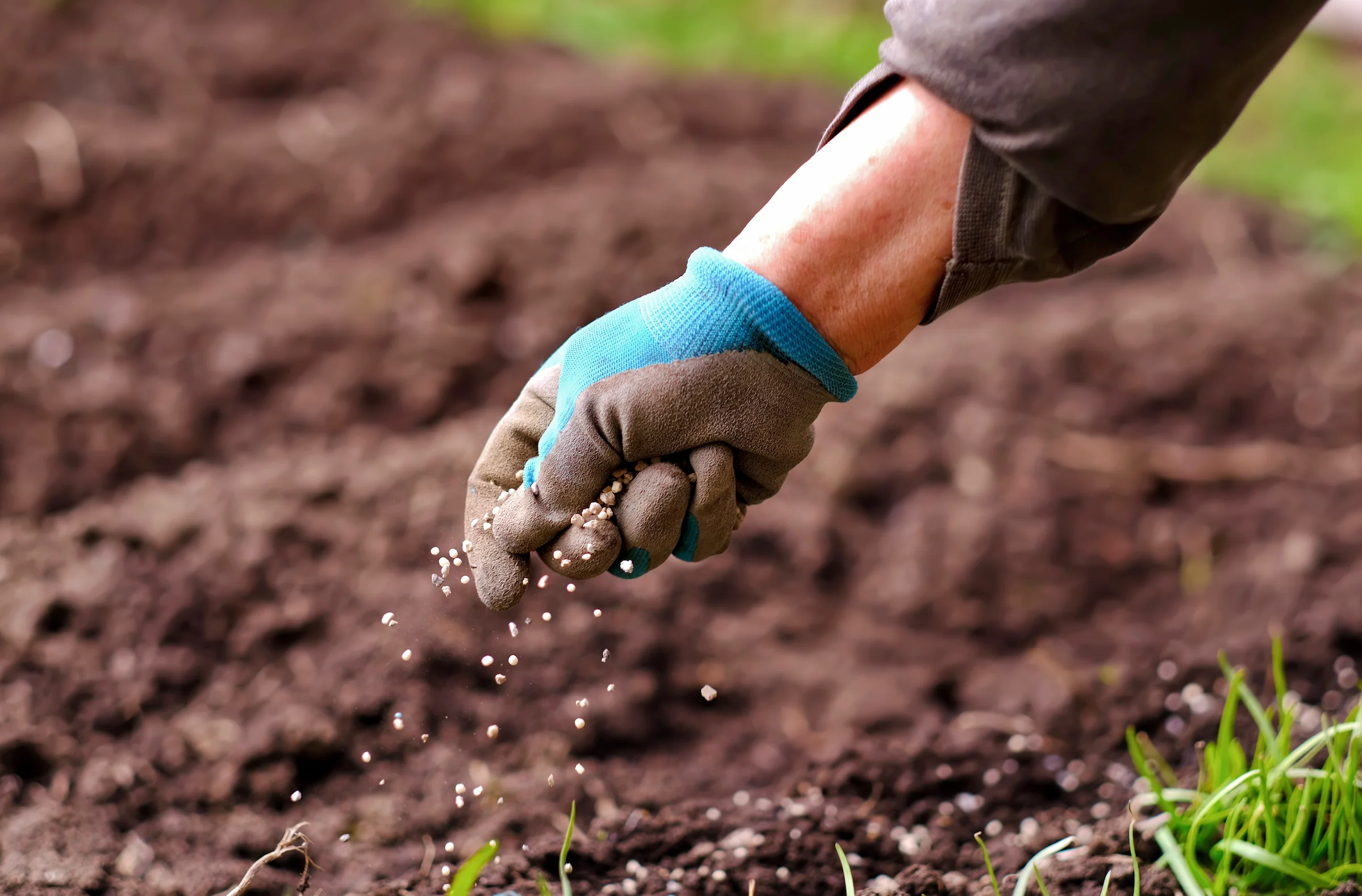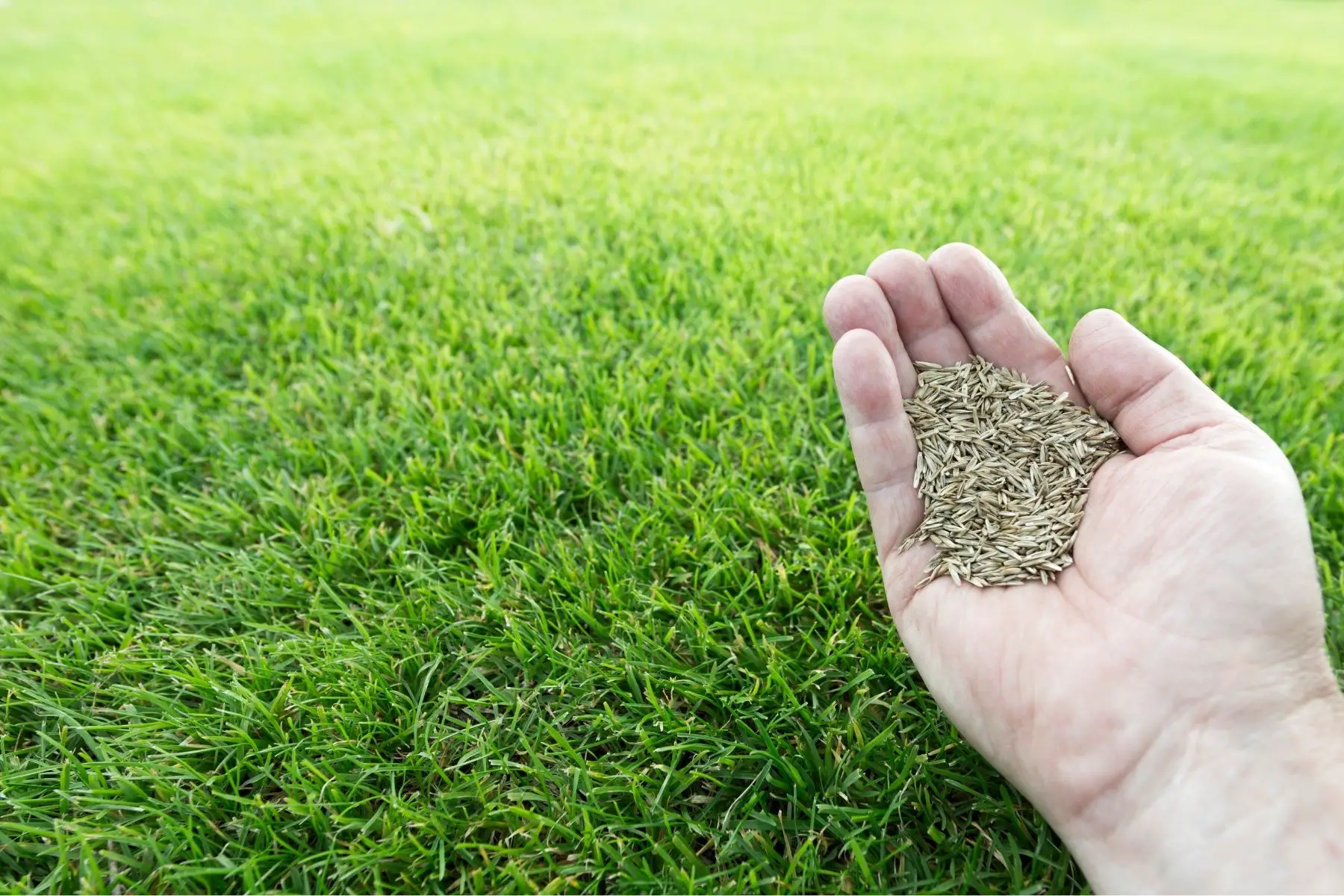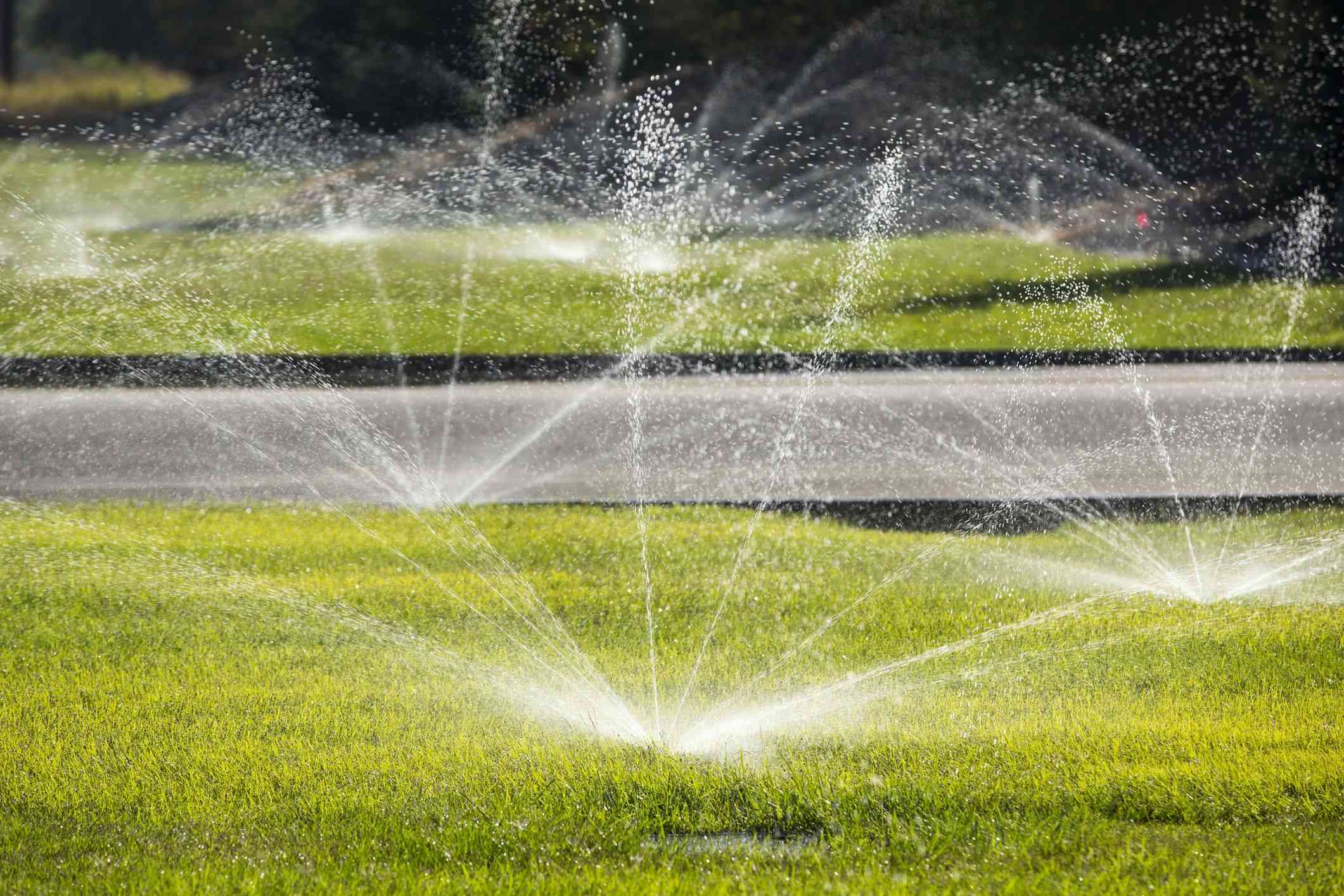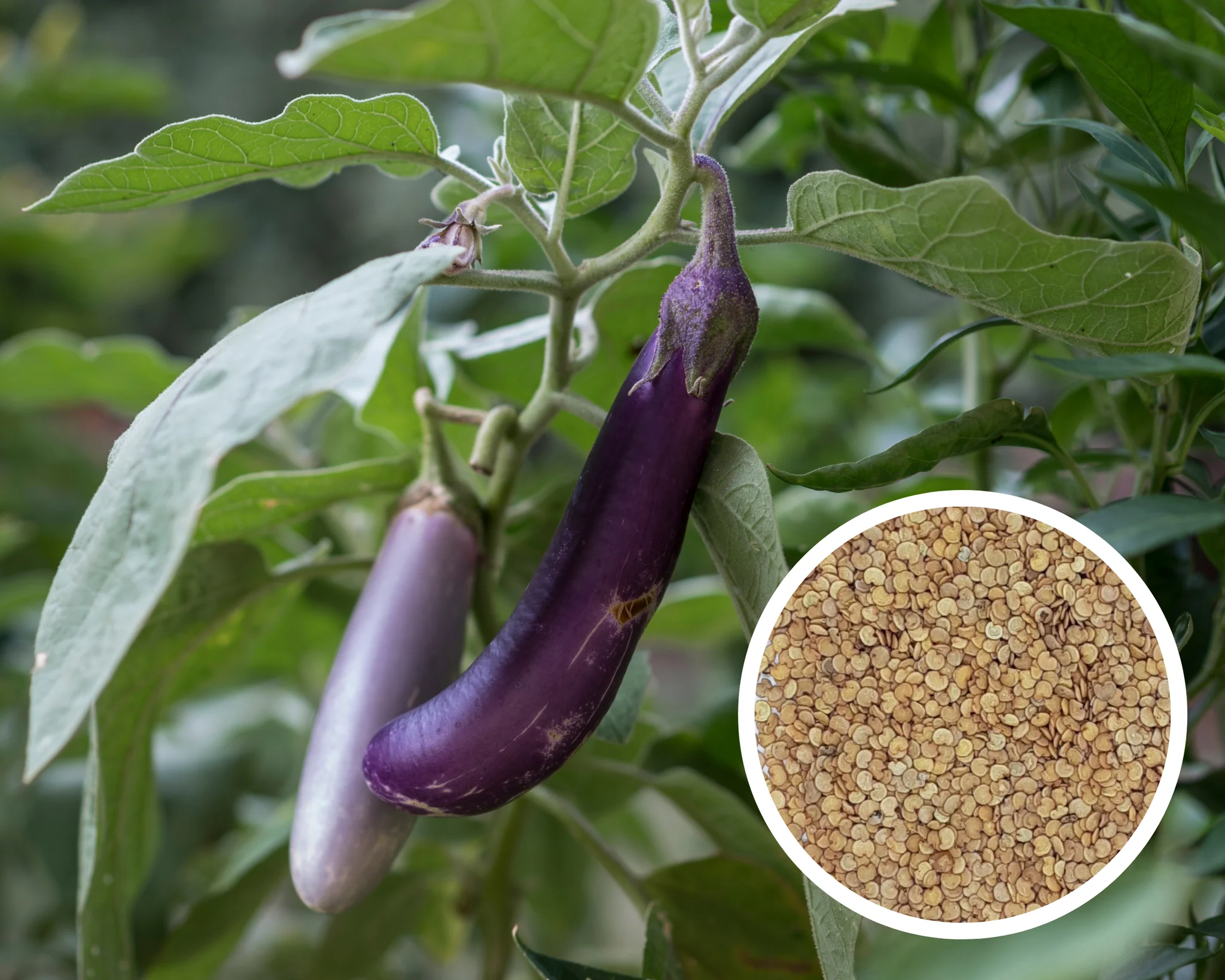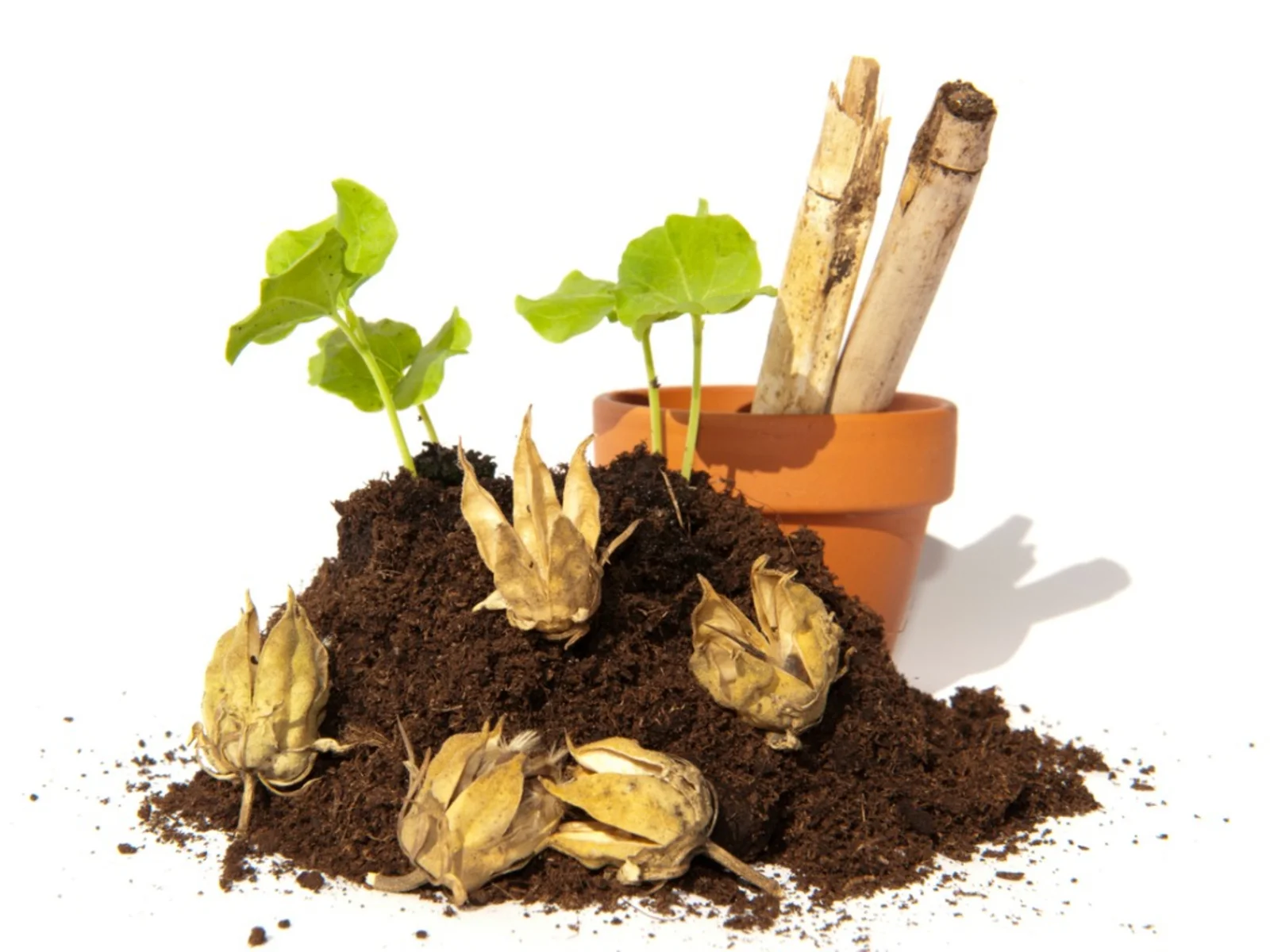Home>Types of Gardening>Ornamental Gardening>How To Plant Bermuda Grass Seeds
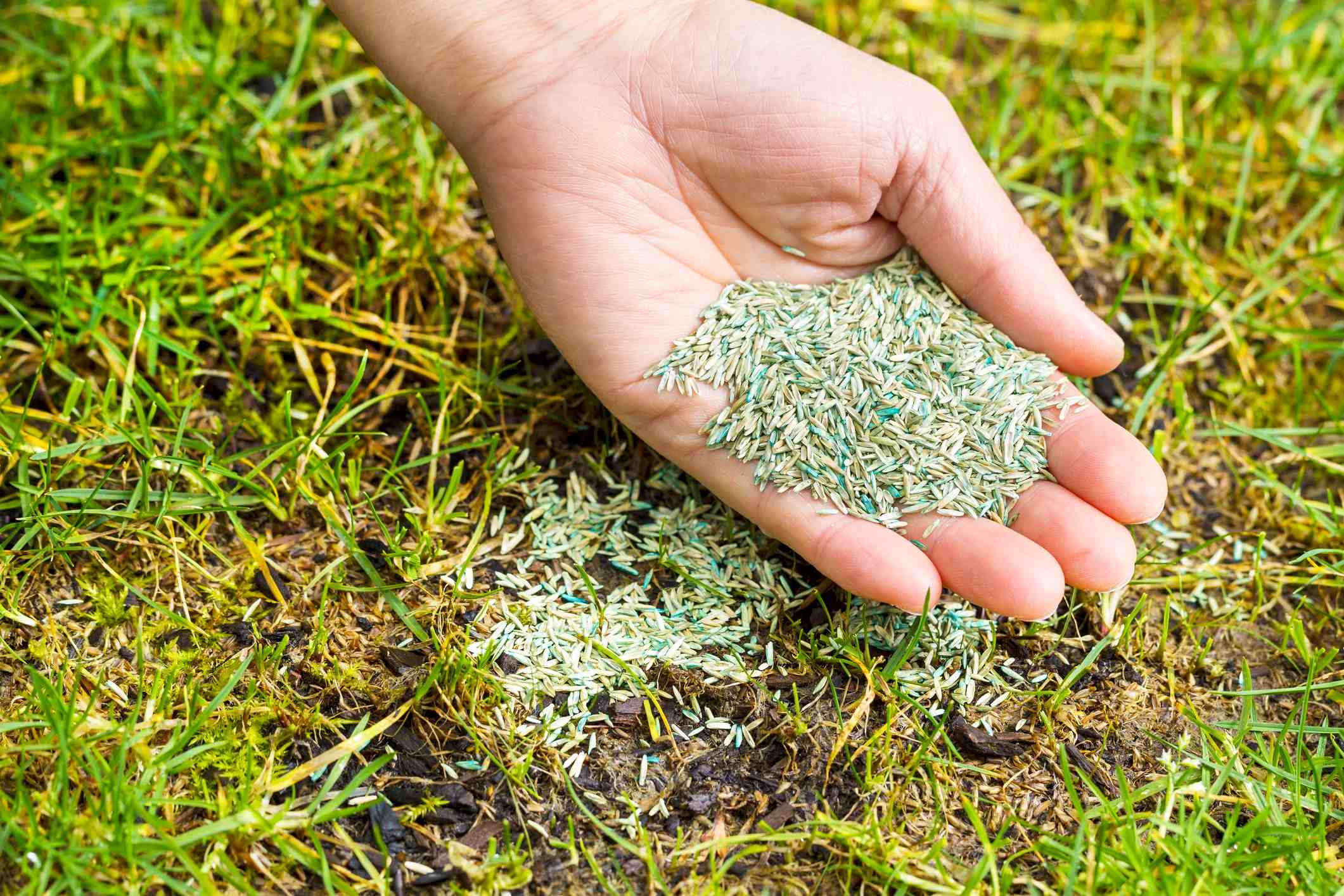

Ornamental Gardening
How To Plant Bermuda Grass Seeds
Modified: January 22, 2024
Learn the steps of planting Bermuda grass seeds for your ornamental gardening needs. Find expert tips and techniques to ensure successful growth and a lush green lawn.
(Many of the links in this article redirect to a specific reviewed product. Your purchase of these products through affiliate links helps to generate commission for Chicagolandgardening.com, at no extra cost. Learn more)
Table of Contents
Introduction
When it comes to creating a stunning and vibrant lawn, nothing beats the beauty of Bermuda grass. With its lush green color and ability to withstand various growing conditions, it’s no wonder why it’s a popular choice among homeowners and landscape enthusiasts.
Planting Bermuda grass seeds may seem like a daunting task, but with the right knowledge and preparation, you can achieve a luxurious and well-maintained lawn in no time. Whether you’re starting a new lawn or revitalizing an existing one, this comprehensive guide will walk you through the steps to successfully plant Bermuda grass seeds.
Before diving into the process of planting Bermuda grass seeds, it’s important to understand its characteristics and why it’s a preferred choice for many gardeners. Bermuda grass (Cynodon dactylon) is known for its exceptional heat and drought tolerance, making it an ideal option for regions with warm climates.
One of the key advantages of Bermuda grass is its aggressive growth pattern, which allows it to establish quickly and compete against weeds. It has a dense root system, making it resilient to foot traffic and wear, making it perfect for high-traffic areas like lawns and sports fields.
In addition to its durability, Bermuda grass also boasts a vibrant green color and a fine texture that adds aesthetic appeal to any landscape. Its ability to spread through both stolons (above-ground stems) and rhizomes (underground stems) creates a dense and uniform lawn, giving it that coveted lush appearance.
Now that we have a basic understanding of Bermuda grass, let’s dive into the step-by-step process of planting Bermuda grass seeds. By following these guidelines, you’ll be well on your way to achieving a beautiful and envy-inducing lawn that will be the envy of your neighborhood.
Step 1: Prepare the Soil
The success of planting Bermuda grass seeds largely depends on the quality of the soil. Before you begin the process, it’s crucial to prepare the soil properly to create an optimal environment for the seeds to germinate and establish strong roots.
Start by removing any existing vegetation, such as weeds or grass, from the area where you plan to plant Bermuda grass. Use a shovel or a garden tiller to loosen the top layer of soil, breaking up any clumps and removing debris.
Next, conduct a soil test to determine the pH level and nutrient content of the soil. Bermuda grass thrives in slightly acidic to neutral soil with a pH range of 6.0 to 7.0. If your soil is too acidic or alkaline, you may need to amend it accordingly by adding lime or sulfur to achieve the desired pH level.
Based on the soil test results, you may also need to enrich the soil with organic matter or fertilizer to provide essential nutrients. Spread a layer of compost or well-decomposed manure evenly over the area and work it into the soil using a rake or a garden tiller. This will improve soil structure, drainage, and nutrient retention.
Ensure that the soil is well-drained to prevent waterlogged conditions, as Bermuda grass is susceptible to root rot in overly saturated soil. If you have heavy clay soil, you may need to amend it with sand or other organic matter to improve drainage.
Lastly, take the time to level the soil surface by removing any bumps or depressions. Use a garden rake or a lawn roller to smooth out the soil and create a uniform surface. Properly preparing the soil will provide a solid foundation for the Bermuda grass seeds to establish and grow.
Step 2: Choose the Right Bermuda Grass Seed
Choosing the right type of Bermuda grass seed is crucial for a successful lawn. There are different varieties of Bermuda grass available, each with its own characteristics and advantages. Consider the following factors when selecting the seed:
- Climate: Assess the climate of your region to determine the ideal Bermuda grass variety. Warm-season Bermuda grasses thrive in regions with hot summers and mild winters, while cold-tolerant varieties are suitable for cooler climates.
- Growth Habit: Bermuda grass can be classified as either common Bermuda grass or hybrid Bermuda grass. Common Bermuda grass is more economical and durable, making it suitable for high-traffic areas. Hybrid Bermuda grass, on the other hand, offers finer texture and better aesthetics, making it ideal for golf courses and residential lawns.
- Maintenance Requirements: Consider the level of maintenance you are willing to invest in your lawn. Some Bermuda grass varieties require more frequent mowing, fertilizing, and watering, while others are more low-maintenance.
- Shade Tolerance: Determine the amount of shade your lawn receives. Some Bermuda grass varieties have better shade tolerance than others. If your lawn has shaded areas, choose a variety that can thrive in those conditions.
Consult with a local nursery or turfgrass expert to get recommendations on the right Bermuda grass variety for your specific needs and location. They can provide valuable insights into the best options based on local conditions and experiences with different varieties.
When purchasing Bermuda grass seed, ensure that you are buying from a reputable source. Look for quality seed that is free from weed seeds, debris, and other contaminants.
By choosing the right Bermuda grass seed, you set the stage for a healthy and vibrant lawn that will withstand the specific climate and growing conditions of your region.
Step 3: Measure and Calculate the Seed Quantity
Accurately measuring and calculating the seed quantity is essential to ensure proper coverage and a uniform lawn. To determine the amount of Bermuda grass seed you’ll need, follow these steps:
- Measure the Lawn Area: Begin by measuring the length and width of the area where you plan to plant Bermuda grass. Multiply these two measurements together to calculate the total square footage of your lawn.
- Consider the Seed Rate: Consult the seed packaging or research the recommended seeding rate for the specific Bermuda grass variety you have chosen. The seeding rate is usually given in pounds or kilograms per 1,000 square feet, indicating the amount of seed required to cover that area adequately.
- Calculate the Seed Quantity: Based on the seeding rate and the total square footage of your lawn, calculate the amount of Bermuda grass seed needed. Divide the square footage of your lawn by 1,000 and then multiply it by the recommended seeding rate in pounds or kilograms.
It’s important to note that overseeding, which is the process of planting additional seed over an existing lawn, may require a different seeding rate. Consult with a turfgrass expert or refer to specific guidelines for overseeding to determine the appropriate seed quantity.
When purchasing the Bermuda grass seed, it’s advisable to buy a slightly higher quantity than what your calculations indicate. This accounts for any potential loss during the planting process or the need for extra seed for touch-ups in sparse areas.
By accurately measuring and calculating the seed quantity, you can ensure proper coverage and achieve a lush and even lawn with Bermuda grass.
Step 4: Prepare the Seedbed
Preparing the seedbed is a crucial step in ensuring successful germination and establishment of Bermuda grass seeds. The seedbed should provide an ideal environment for the seeds to come into contact with the soil and receive the necessary moisture and nutrients. Follow these steps to prepare the seedbed:
- Remove Debris: Clear the area of any rocks, roots, or other debris that may hinder seed germination or impede the growth of the Bermuda grass plants.
- Break Up Soil: Use a garden tiller, rake, or shovel to loosen the top layer of the soil, breaking up any compacted areas. This will allow the seeds to penetrate the soil easily and establish strong root systems.
- Level the Surface: Smooth out the soil surface using a rake or lawn roller to create a uniform bed for planting the seeds. This will ensure even germination and prevent water pooling in uneven areas.
- Remove Weeds: Thoroughly remove any existing weeds from the site before planting the Bermuda grass seeds. Weeds can compete with the new grass for nutrients, sunlight, and water, hindering its growth and establishment.
- Aerate the Soil (optional): If the soil is compacted or has poor drainage, consider aerating it before planting the seeds. Aeration involves creating small holes or channels in the soil to improve air circulation, water infiltration, and nutrient absorption.
Take care not to overwork the soil during this process, as excessive disturbance can lead to poor seed-to-soil contact. The goal is to create a loose, well-prepared seedbed that will allow the Bermuda grass seeds to establish and grow with ease.
Before moving on to the next step, take a moment to double-check the seedbed for any remaining debris or weeds. Ensuring a clean and receptive surface will give your Bermuda grass seeds the best chance at successful germination and growth.
Step 5: Plant the Bermuda Grass Seeds
Planting Bermuda grass seeds is an exciting step in the journey to a beautiful and lush lawn. Follow these guidelines to ensure proper planting and maximize the chances of successful germination:
- Choose the Right Time: Plant Bermuda grass seeds during the recommended planting season for your region. In general, the best time to plant Bermuda grass is during the late spring or early summer when soil temperatures reach around 65-70°F (18-21°C), providing optimal conditions for seed germination.
- Divide the Seed Quantity: Divide the total quantity of Bermuda grass seeds into two equal portions. You will use the first portion for the initial planting, and the second portion will be reserved for overseeding or touch-ups.
- Use an Appropriate Spreader: Utilize a broadcast spreader or a handheld spreader to evenly distribute the Bermuda grass seeds over the prepared seedbed. Follow the manufacturer’s instructions to set the appropriate seed flow rate for your specific spreader to ensure even coverage.
- Overseed for Complete Coverage: To ensure complete coverage, make two passes over the seedbed, each in a different direction (e.g., north-south and then east-west). This will help achieve a dense and uniform lawn as the seeds have the opportunity to settle into any gaps.
- Avoid Overplanting: Resist the temptation to apply excessive amounts of seeds, as this can lead to overcrowding, competition, and poor growth. Overplanting can also create issues with disease and pest susceptibility. Follow the recommended seeding rates provided by the seed manufacturer.
- Rake the Seeds: Gently rake the surface of the seedbed after planting to ensure good soil-to-seed contact. This will help the seeds to establish contact with the soil, improving germination rates.
After planting the Bermuda grass seeds, lightly water the area to settle the seeds into the soil. Be careful not to use excessive water that could displace or wash away the seeds. Maintain moist soil conditions by watering lightly and frequently until the seeds germinate, usually within 7-14 days.
By following these steps, you’ll provide the Bermuda grass seeds with an ideal environment for germination and encourage the development of a healthy and vibrant lawn.
Step 6: Water and Maintain the Seeds
Proper watering and maintenance are crucial during the germination and establishment phase of Bermuda grass seeds. Follow these guidelines to ensure healthy growth and long-term success:
- Watering: After planting the seeds, water the area lightly but consistently. Aim to keep the soil moist, but avoid overwatering, as it can lead to poor root development and disease. Water early in the morning to allow the grass to dry before evening and prevent prolonged moisture on the foliage.
- Irrigation Schedule: As the seeds germinate and the grass starts to establish, adjust your watering schedule accordingly. Gradually increase the irrigation duration and frequency to provide enough water for the growing plants. Deep, infrequent watering promotes deep root growth and helps the Bermuda grass withstand drought conditions.
- Mowing: Once the Bermuda grass reaches a height of around 2-3 inches, it’s time to start mowing. Set your mower at the appropriate height for the specific Bermuda grass variety you’ve chosen. Regular mowing encourages lateral growth and helps maintain a dense and uniform appearance. Avoid cutting more than one-third of the grass blade height at a time.
- Fertilizing: Provide your Bermuda grass with the necessary nutrients through regular fertilization. Follow the recommended fertilization schedule for your specific grass variety, typically applying a balanced fertilizer in early spring and again in late summer. Avoid fertilizing newly planted grass until it is fully established.
- Weed Control: Regularly monitor your Bermuda grass for weeds and address them promptly. Hand-pull or spot-treat weeds as they emerge to prevent competition for nutrients and sunlight. Use pre-emergent herbicides as directed to prevent weed seeds from germinating in the future.
- Aeration: Over time, the soil beneath your Bermuda grass may become compacted. Periodic aeration can help improve soil drainage, root growth, and overall lawn health. Consider aerating your lawn every 1-2 years to maintain optimal growing conditions.
By implementing a proper watering and maintenance routine, you’ll encourage vigorous growth, promote a denser lawn, and improve the overall health and appearance of your Bermuda grass.
Step 7: Monitor the Growth and Make Necessary Adjustments
Once your Bermuda grass seeds have germinated and established, it’s important to monitor their growth and make any necessary adjustments to ensure the long-term health and vitality of your lawn. Follow these steps to effectively monitor and maintain your Bermuda grass:
- Regular Inspections: Take the time to inspect your lawn regularly. Look for any signs of stress, disease, pests, or nutrient deficiencies. Catching and addressing issues early on can prevent them from spreading and causing long-term damage.
- Addressing Bare or Patchy Areas: If you notice any bare or patchy areas in your Bermuda grass lawn, seed these areas to promote uniform growth and coverage. Loosen the soil surface with a rake, apply a thin layer of topsoil or compost, and scatter Bermuda grass seeds in the bare spots. Keep these areas consistently watered until the seeds have germinated and established.
- Proper Weed Management: Stay vigilant in your weed management efforts. Remove any weeds that emerge promptly. Use herbicides as necessary, following the product instructions carefully. Be mindful of the specific Bermuda grass variety you have, as some varieties may have different tolerance levels for certain herbicides.
- Maintaining Adequate Watering: Continue to monitor and adjust your watering schedule as needed. Avoid overwatering, as it can lead to shallow root growth and promote disease. Adjust your irrigation timing and duration based on weather conditions, rainfall, and soil moisture levels.
- Regular Fertilization: Follow a consistent fertilization schedule to provide your Bermuda grass with the necessary nutrients. Apply a balanced fertilizer according to the recommended rates for your specific grass variety and based on soil test results. Consider soil testing every few years to accurately assess nutrient requirements.
- Adapting to Environmental Conditions: Bermuda grass can adapt to different environmental conditions, but extreme circumstances may require extra care. During periods of extended drought or intense heat, consider adjusting your watering schedule or implementing water-saving practices to help your Bermuda grass thrive.
- Consulting with Professionals: If you encounter persistent issues or have specific concerns about your Bermuda grass lawn, consult with a professional turfgrass expert or local extension service. They can provide guidance tailored to your specific region and help you address any challenges you may face.
By monitoring the growth of your Bermuda grass and making necessary adjustments, you’ll be able to maintain a healthy and vibrant lawn that will be the envy of your neighborhood.
Conclusion
Planting Bermuda grass seeds and establishing a lush and vibrant lawn requires careful planning, preparation, and ongoing maintenance. By following the steps outlined in this guide, you can set yourself up for success and create a beautiful outdoor space that you can enjoy for years to come.
From preparing the soil and choosing the right Bermuda grass seed variety to measuring and calculating the seed quantity, each step plays a crucial role in the overall success of your lawn. By providing the optimal growing conditions, such as adequate moisture, proper nutrition, and regular maintenance, you can ensure healthy growth and achieve a dense and uniform lawn.
Remember to monitor the growth of your Bermuda grass, making any necessary adjustments along the way. Regular inspections, addressing bare or patchy areas, managing weeds, and adapting to environmental conditions are essential for the long-term health and vitality of your lawn.
Additionally, don’t hesitate to consult with local experts or professionals for guidance and advice specific to your region. They can provide valuable insights and help you overcome any challenges you may encounter along the journey of maintaining your Bermuda grass lawn.
With dedication, patience, and a little bit of know-how, you can transform your outdoor space into a lush and inviting haven with the beauty and resilience of Bermuda grass. Start planning today and get ready to enjoy the rewards of your efforts with a stunning and thriving lawn.

